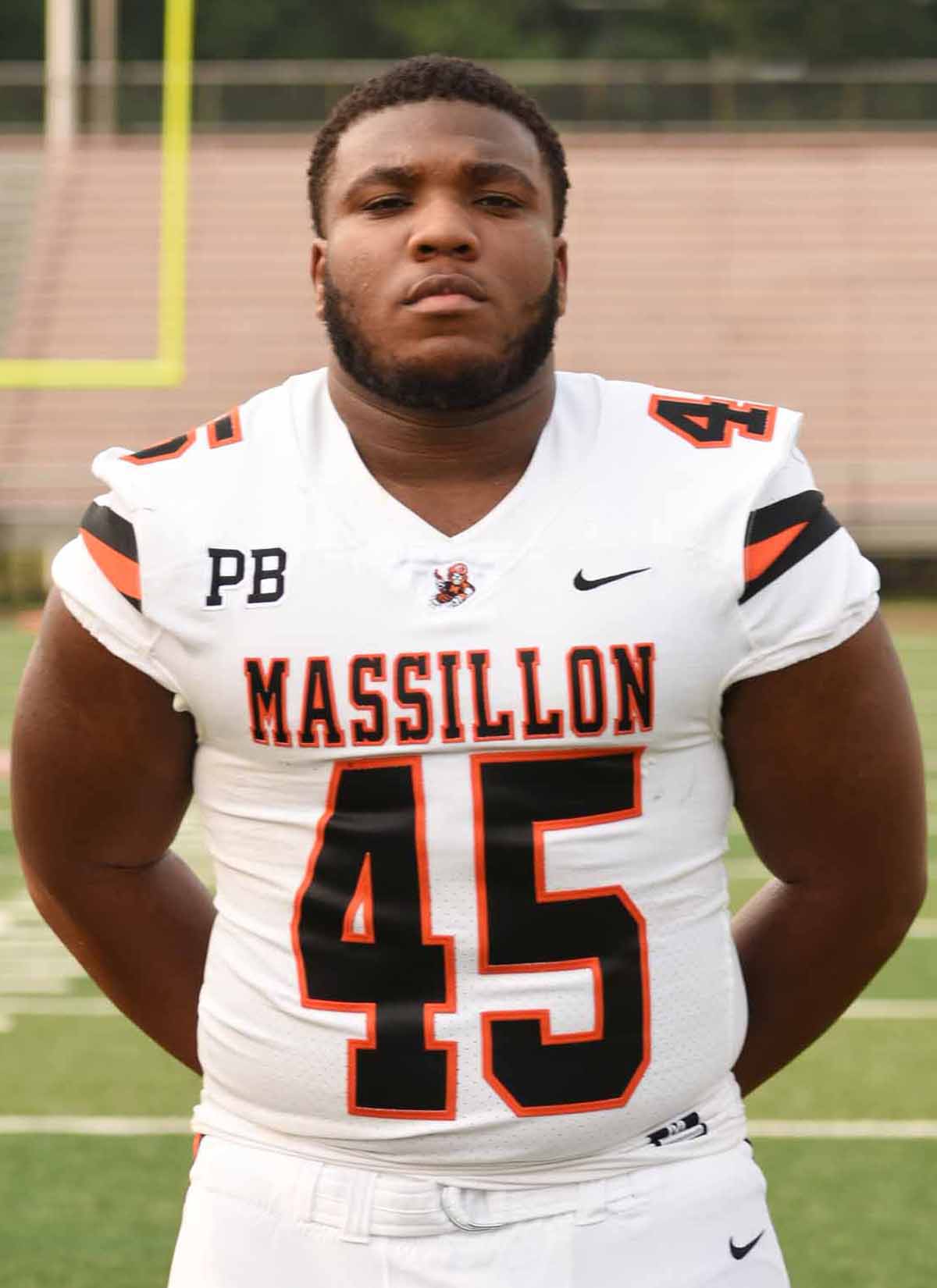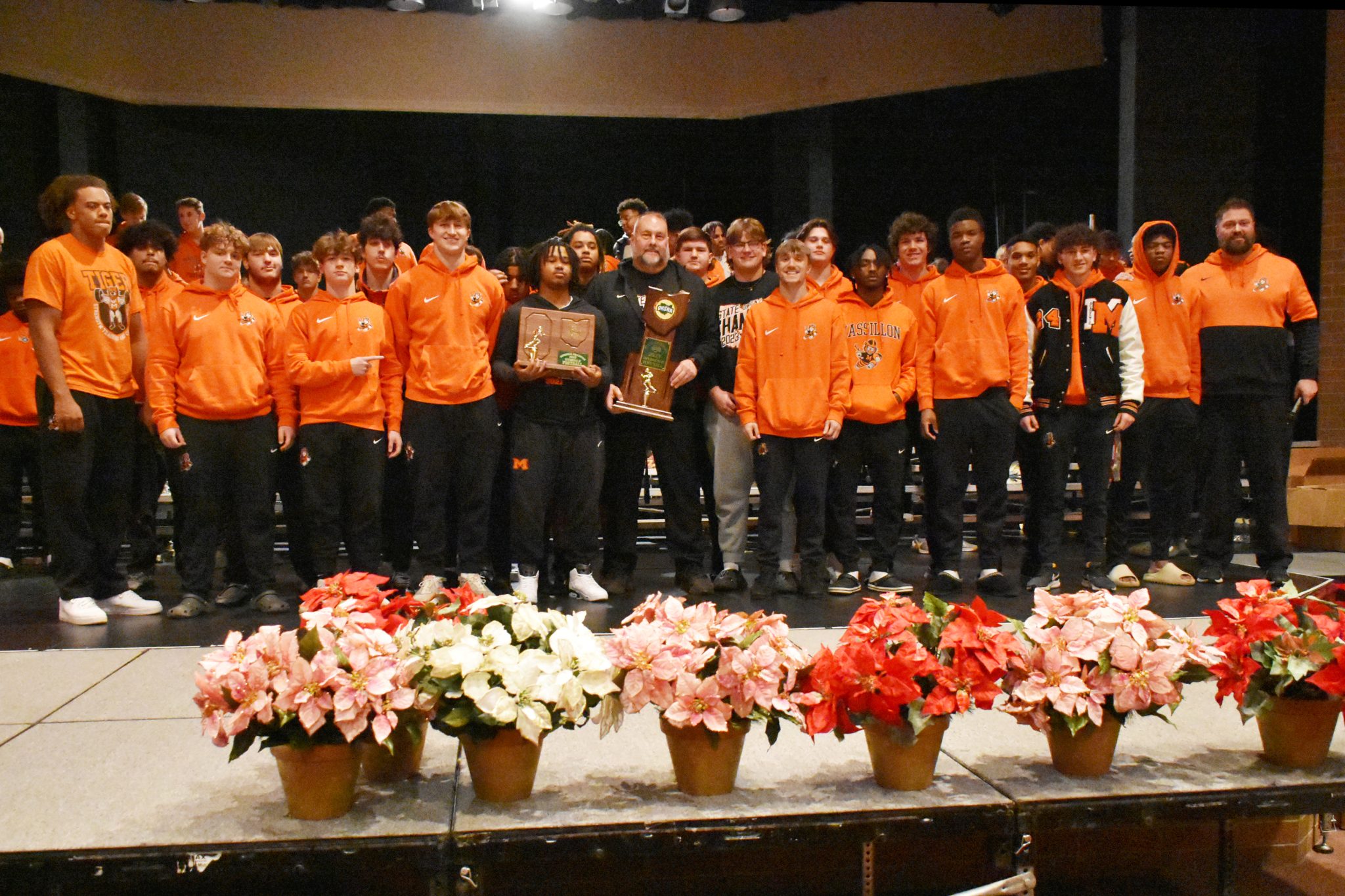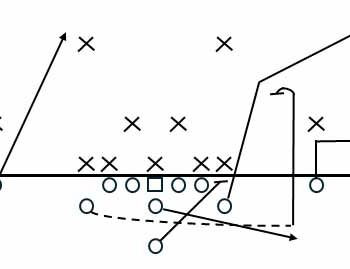
The Changing Landscape of Massillon Football – Part 1:…
The Changing Landscape of Massillon Football – Part 1: Offensive Formations
Keith Jarvis and Bill Porrini contributed to this story
This is the first of a 7-part series, which includes the following installments:
- Part 1: Offensive Formations
- Part 2: Defensive Formations
- Part 3: Passing Frequency
- Part 4: Scheduling
- Part 5: Roster Size
- Part 6: Stadiums
- Part 7: Game Attendance
Little is known about the styles of offense used by Massillon football coaches prior to the time of Paul Brown, other than the coaches may have adopted what was being used at the time by various colleges. Massillon fielded its first team in 1891 and they most likely used mass formations, which at that time was totally within the rules, with any number of players on the line of scrimmage. They probably also used the V-formation on both kicks and scrimmage plays, the latter being referred to as the “shoving wedge.” And they certainly did not throw a pass, since it was not permitted at that time. Below is an example of a mass formation.
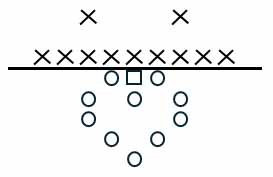
But in 1984 a refinement of rules was introduced in an attempt to make the game safer, certainly impacting the game’s evolution. Mass formation plays were eliminated. No more than five players were permitted in the backfield. And players could not be moving forward prior to the snap.
In 1904 a rule was put in place in that six players were required on the line at all times. In addition, the quarterback was now permitted to run, but must move laterally for at least five yards before turning up field. This led to the checkerboard-like field lines.
Continuing to emphasize safety, the college rules committee introduced the pass in 1906, although with several limitations involved, including restrictions on where the ball could be thrown, a 15-yard penalty for an incomplete pass and a loss of possession if the pass went untouched by either team. As a result, few coaches took advantage of this new rule, unless desperate enough toward the end of the game. Three years later, realizing that the change had little impact on safety since it in effect wasn’t being used, the committee removed the penalties. Little did they realize how much the game would change in the years to come.
The Single-Wing Formation
A rule was added around 1907 that all players in the backfield that have the potential to receive the snap must position themselves off the line, meaning that the quarterback could not be under center. That led to the creation by Glen Pop Warner of the single-wing formation, which positioned three players in the immediate backfield and a fourth placed as a wing on the edge. The play started with a snap of the ball to any of two players position in the immediate vicinity of the center and the quarterback near the line but not able to receive the snap. In the play itself several pulling lineman would lead interference for the runner. Thus, the plays were designed to trick the defense rather than overpower it. Paul Brown (1932-40) utilized this offense to great success, while adding a pre-snap shift to introduce further confusion for the defense. His 1940 game against Canton McKinley, in which both teams used this offense, can be viewed at this link. Brown ended his career at Massillon with an 80-8-2 record, six state titles and four national titles.
It is likely that the coaches from 1907 up to Paul Brown also used this offense. It is also likely that Massillon’s next three coaches, Elwood Kammer (1942-44), Augie Morningstar (1945), Bud Houghton (1941, 46-47) used the single-wing.
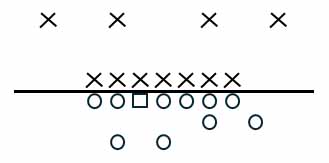
Full House T-Formation
In 1945 the rule requiring backfield players to be positioned several yards behind the line of scrimmage was removed, opening the door to the T-Formation. This concept was created by Walter Camp in 1882 as a form of “mass formation” play, designed to provide a faster-paced, higher-scoring game. The basic concept was a quarterback under center, a fullback behind the quarterback and a halfback on either side of the fullback. But the T-Formation was placed on the shelf for a while, in favor of the single-wing, prior to when the aforementioned rule change went into effect.
New Massillon Coach Mather (1948-53) introduced the T to Massillon football, with an oft-used modification that involved repositioning one of the halfbacks on the wing to gain an additional advantage on the defense. The Tigers enjoyed great success with this new offense, winning 57 of 60 games and capturing six state and three national championships. Mather’s 1953 game against Canton McKinley can be viewed at this link. Interestingly, the Bulldogs, who went through two coaching changes during the time of Chuck Mather, were still running the single-wing, which makes one believe that use of the T-formation was unique to Mather and a step ahead of the competition. After Mather left for Kansas, Tom Harp (1954-55) was hired and he also used the T-Formation.

Wing-T Formation
The T-Formation was designed as a power football concept. But not all high school teams had the player size required to be effective with it. So, many opted for the Wing-T. It was created by David M. Nelson, coach of Maine (1949-1950) and later coach of Delaware, as an offshoot of the single-wing. It utilized motion and misdirection in the run game along with short passes. With a quarterback under center, a fullback was positioned directly behind and a halfback next to the fullback. The fourth back was on the wing. Often, the wingback would motion before the play began.
Several Massillon coaches in succession used the Wing-T, including Lee Tressel (1956-57), Leo Strang (1958-63), Earl Bruce (1964-65), Bob Seaman (1966-68) and Bob Commings (1969-73). Strang also modified the formation by using an unbalanced line (moving a tackle to the other side of the center). Strang, Bruce and Commings each won state titles with it.

Power-I Formation
Massillon returned to power football at times, but with the Power-I. This formation was developed by Tom Nugent, coach of VMI in 1950 as a replacement for the single-wing and an alternative to the T-formation. The quarterback was under center and immediately behind him was a fullback in a 3-point stance. Standing upright behind the fullback was a tailback, who was normally featured in the run game. It provided a good ground attack providing the tailback was sufficiently talented, but was somewhat restricted in the passing game.
Chuck Shuff (1974-75), John Moronto (1985-87) and Jack Rose (1992-97) each utilized the Power-I as coaches at Massillon, but combined to qualify for the playoffs only three times in eleven tries.
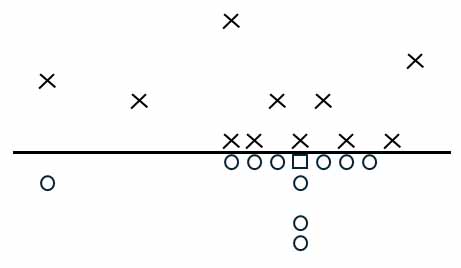
Run-and-Shoot Formation
Major changes were in store at Massillon when Mike Currence (1976-84) brought his run-and-shoot offense to town. According to him, football was going to be fun again and there was now a place for the smaller player. The players responded and Currence had around 90 juniors and seniors on each of his nine rosters.
The original run-and-shoot offense was created by Glenn “Tiger” Elllison as a ploy to make average teams more competitive. Currence readily embraced it, while simplifying it for use at the high school level. His base formation involved five interior linemen with a split end on either side. The quarterback was under center with a fullback behind in a 3-point stance. Finally, a wingback was positioned off of each tackle. The play began with one of the wingbacks going in motion. Running plays resembled that of the Wing-T offense, while pass plays were more like a pre-cursor to the spread offense when there are three receivers on one side of the ball. After the motioning wingback cleared the interior line, the QB would roll to the direction of the motion, seeking one of three potential targets on one side of the field: the wide receiver and both wingbacks. Of course, there was also the option for the QB to tuck the ball and run.
With a formation that had five offensive lineman, the defensive end was uncovered, freeing him to pressure the quarterback. The blocking assignment therefore went to the fullback, who led interference for the quarterback. The fullback was taught to take out the defensive end by blocking low. But the OHSAA introduced a new rule requiring the fullback to stay on his feet for the block. So, unless the fullback weighed well in excess of 200 pounds, he was at a decided disadvantage against the larger defender. As a result (and this was at the time of Chris Spielman), Currence went more to an I-formation with pocket passing. So, the pass part of Currence’s run-and-shoot was short-lived.
Currence qualified for the playoffs three times during his eight years and twice advanced to the Division 1 state finals.
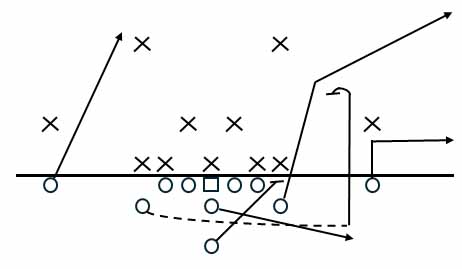
Run-and-Boot Formation
It was called the “run-and-boot,” introduced by new head coach Lee Owens (1988-91). Multiple formations; quarterback under center; one or two running backs; one or two tight ends; two wide receivers; and some quarterback option rollouts. Basically, the offense was adapted to the available personnel. But you won’t find it in the literature. It was all Owens’. He enjoyed good success during his four years, qualifying for the playoffs three times in four years.
Spread Formation
Rick Shepas (1988-04) brought the spread to Massillon and it has continued to this day with the likes of Tom Stacy (2005-07), Jason Hall (2008-14) and Nate Moore (2015-23). Created by high school coach Jack Neumeier in 1970, his modern version was designed to create mismatches and isolations in the passing game. But it requires a good passing quarterback to be successful. No longer do defenses rule the day. Call it the “great equalizer” for teams that use it when lacking size on the line.
The spread has been used by the Tigers continuously over the past 26 years, producing 17 playoff qualifications, ten regional championships, five state finals appearances and one state title.
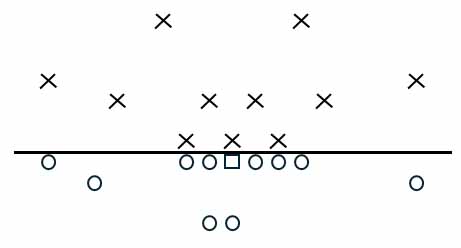
Performance Review
Formations changed throughout Massillon’s long history for several reasons. Some developed as a result of modifications to the rules, enacted in an attempt to make the game safer. Others were used to better fit the talent-level of the players. Many coaches simply followed the current trends. But the ultimate goal was to gain a perceived advantage in the ability to score points and thereby win more games. But in reality, changing formations did not always produce the desired results. At least not until the spread offense came into play.
The chart below shows Massillon’s average offensive scoring for each formation. The data indicate that the single-wing, the T-formation and the spread produced the best scoring results, averaging 30-36 points per game. Meanwhile, the other offenses averaged 26-27. But one should consider that the results of the single-wing were highly influenced by the coaching of Paul Brown. Subsequent coaches averaged much less. In addition, the results of the T-formation were highly influenced by the coaching of Chuck Mather. Tom Harp, who followed Mather, also averaged much less. Only the spread has shown consistent improvement in scoring, with each of the four coaches that used it producing similar, but ever improving, results.
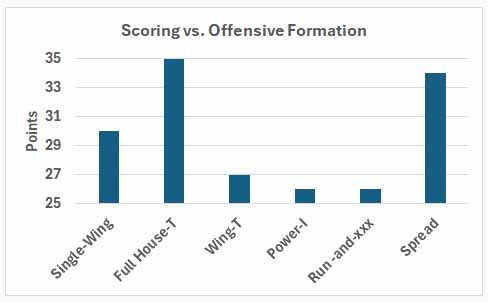
So, it can be reasonably concluded that the spread formation is the best offense, while the other formations, although considered progressive at the time, produced relatively the same lesser results. In other words, attempts to improve on scoring by changing formation were meager at best, and only improved when it was more influenced by the talent levels of the coaches rather than the formations themselves. Except for the spread offense.

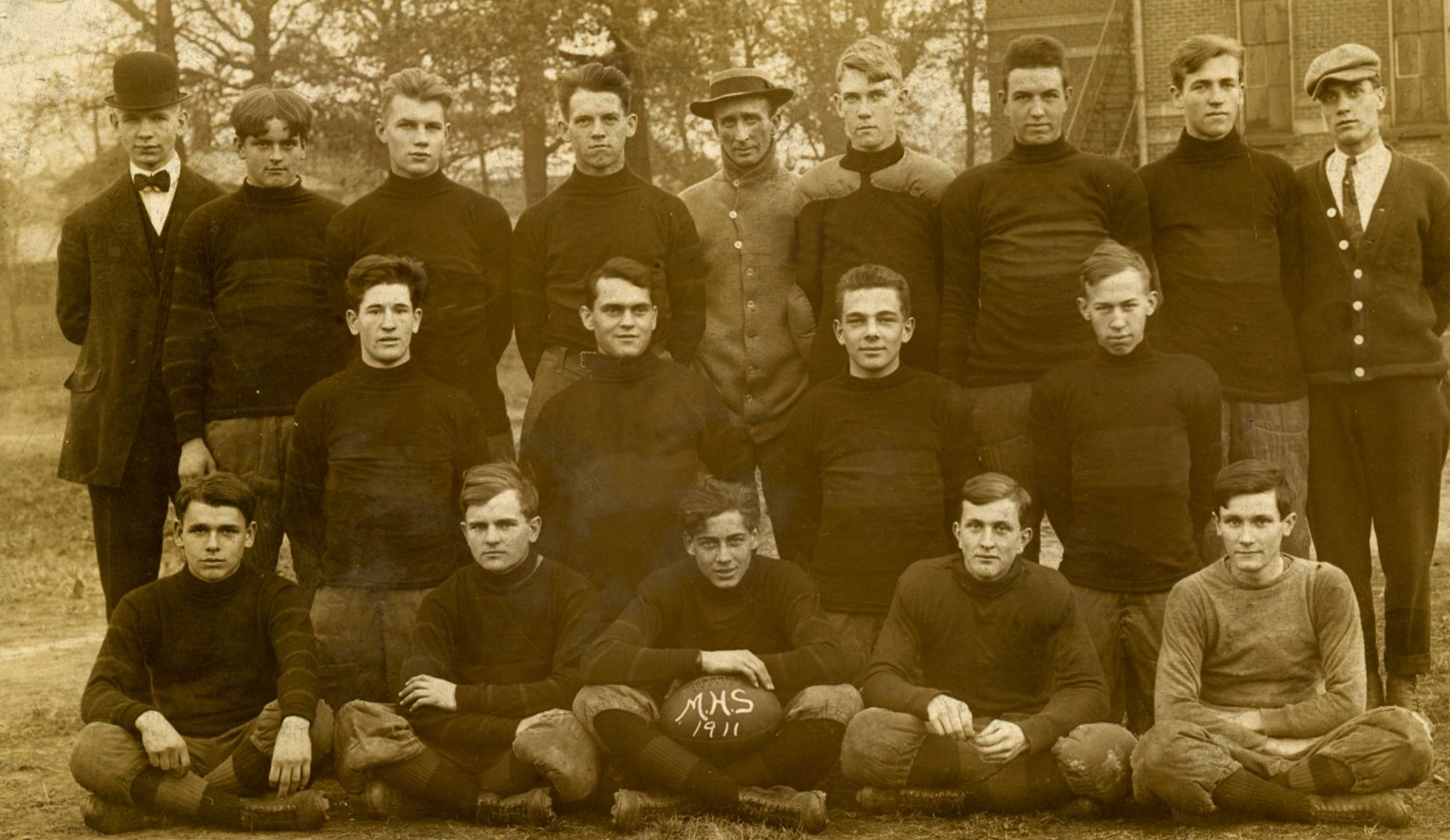
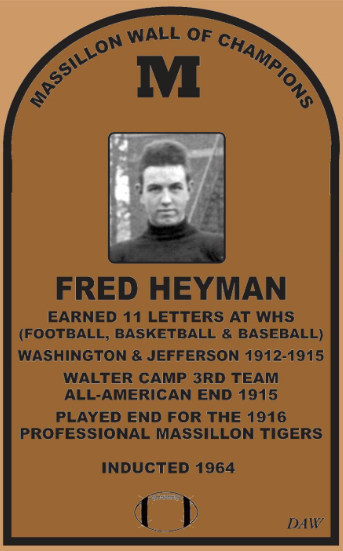


 “That was my senior year,” Wells recalled much later in life in a letter to Charles Gumpp, President of the Massillon Football Booster Club. “I was a ‘new boy’, having just moved to Massillon that summer from the wide open spaces of South Dakota, Wyoming and Nebraska. The first day at school several of my classmates came around to suggest that of course I was coming out for football. And although I protested that I had never had a ball in my hands, they countered with the argument that I was a good-sized lump of a boy and would make a fine prospect. So, I promised.
“That was my senior year,” Wells recalled much later in life in a letter to Charles Gumpp, President of the Massillon Football Booster Club. “I was a ‘new boy’, having just moved to Massillon that summer from the wide open spaces of South Dakota, Wyoming and Nebraska. The first day at school several of my classmates came around to suggest that of course I was coming out for football. And although I protested that I had never had a ball in my hands, they countered with the argument that I was a good-sized lump of a boy and would make a fine prospect. So, I promised.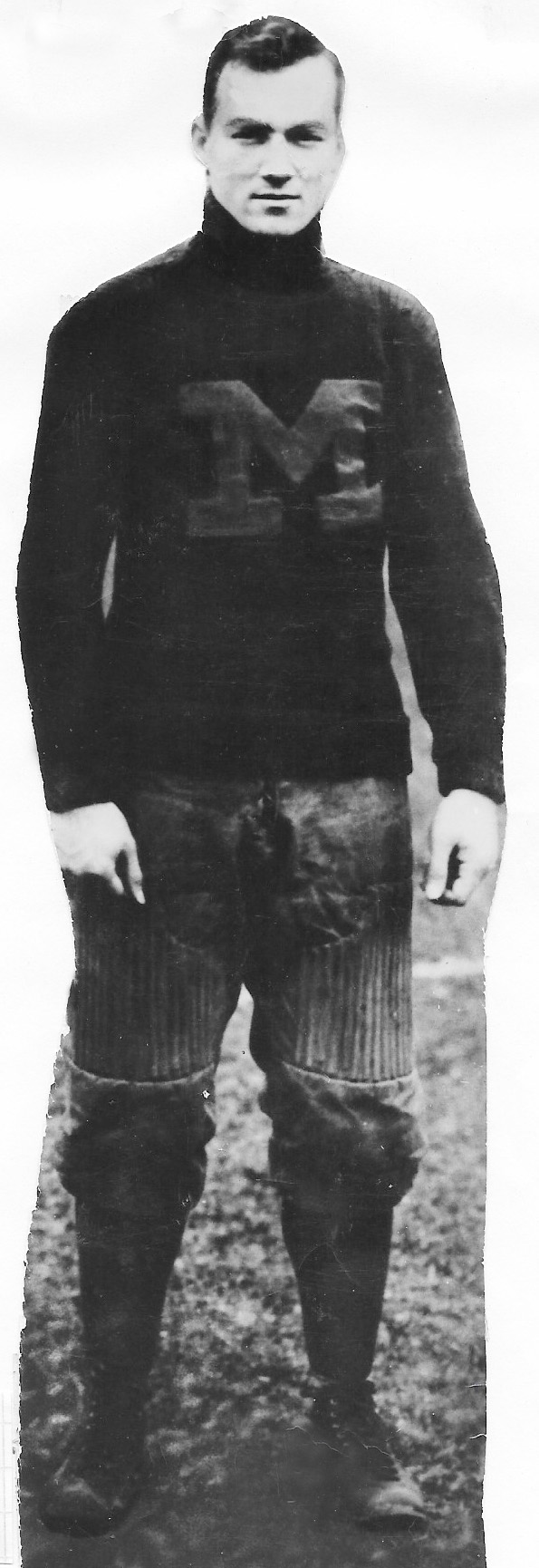 A few years later he enrolled at the University of Michigan, where joined the football team as a tackle, with his 1909 team posting posting a record of 6-1. The following season the Wolverines finished 3-0-3, defeating Minnesota 6-0 to win the Western Conference championship. Wells was stellar. playing the first three games at right tackle and then moving to right end for the remainder of the season. For his effort he was named 1st Team All-American by Walter Camp.
A few years later he enrolled at the University of Michigan, where joined the football team as a tackle, with his 1909 team posting posting a record of 6-1. The following season the Wolverines finished 3-0-3, defeating Minnesota 6-0 to win the Western Conference championship. Wells was stellar. playing the first three games at right tackle and then moving to right end for the remainder of the season. For his effort he was named 1st Team All-American by Walter Camp.
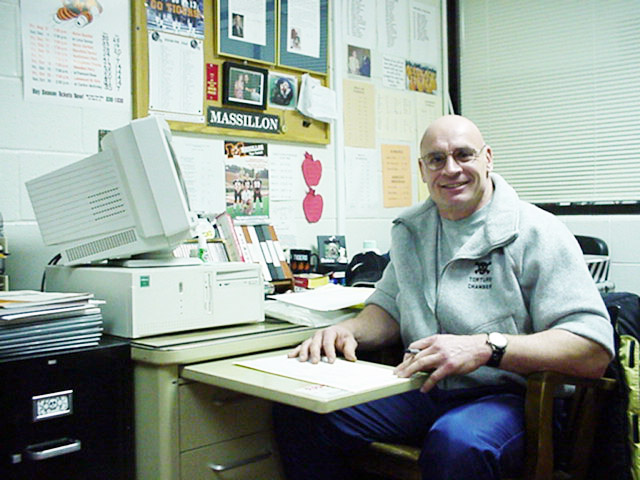 Numerous legacy families have come through the Massillon system during its long history and the Studer family was no exception. Junie and his wife Delores were long-time supporters of the football program, with the two of them founding the
Numerous legacy families have come through the Massillon system during its long history and the Studer family was no exception. Junie and his wife Delores were long-time supporters of the football program, with the two of them founding the 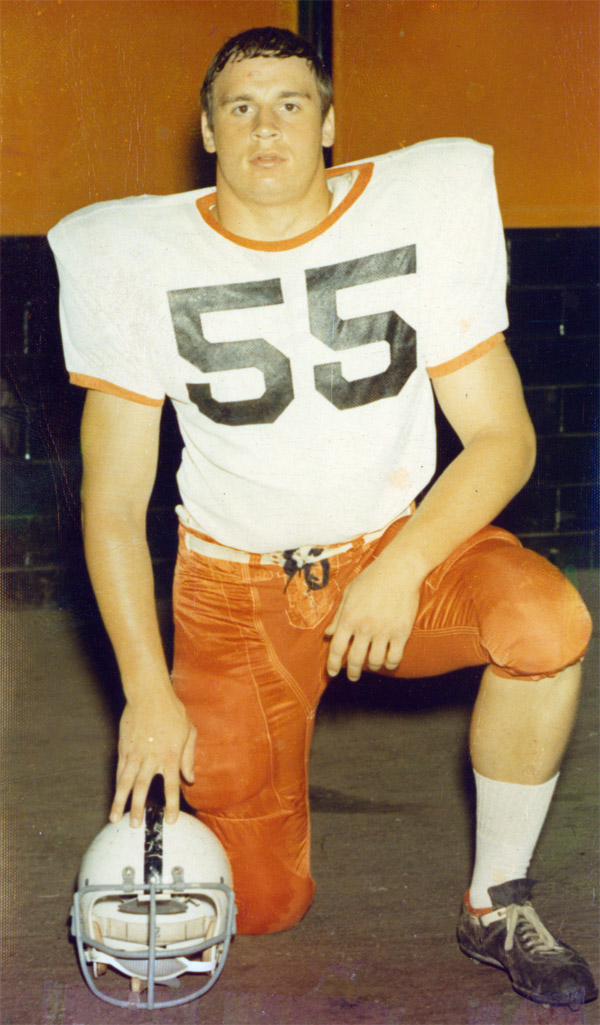 He would get his chance to become a varsity starter in 1970 as a junior on a team comprised of mostly seniors. And what a start it was. Playing under head coach Bob Commings as a 5’-11”, 200 lb. center, the Tigers fashioned a perfect 10-0 record and were never seriously challenged in any game. In fact, they outscored their opponents by an average margin of 41-3, while rushing for 277 yards per game.
He would get his chance to become a varsity starter in 1970 as a junior on a team comprised of mostly seniors. And what a start it was. Playing under head coach Bob Commings as a 5’-11”, 200 lb. center, the Tigers fashioned a perfect 10-0 record and were never seriously challenged in any game. In fact, they outscored their opponents by an average margin of 41-3, while rushing for 277 yards per game.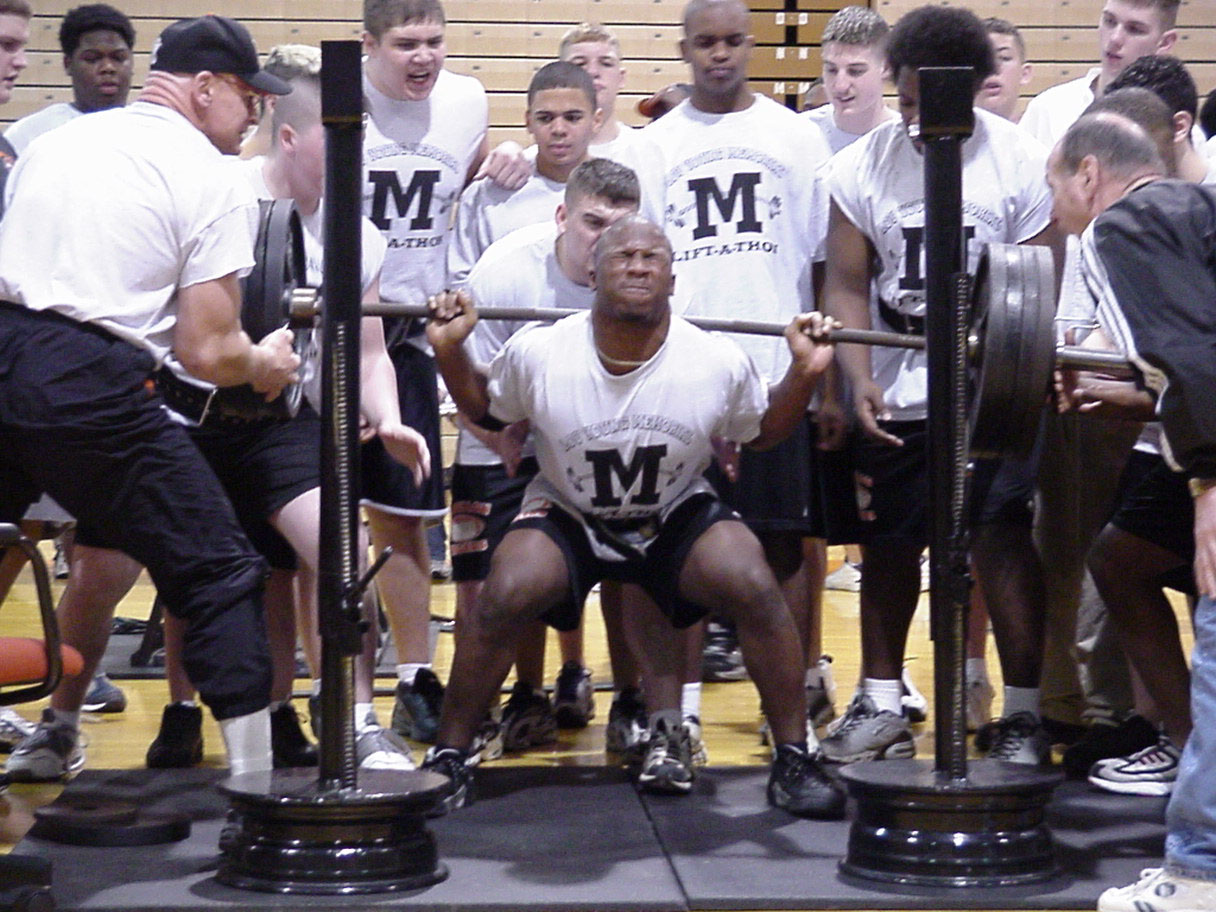 His pride and joy was the weight room that he established at Massillon and the strength program he instituted, which is still in place today. “Our weight room is 55’ by 70’,” said Studer. “It’s the same size as the weight room we had at the old high school. When we built the new high school we patterned it after the old one. It pretty much consists of free weights. We really compare the weight room to a lot of Division 1 colleges. There’s going to be your Tennessees, your Nebraskas and your Michigan where they have a better facility than this. I would compare this to any MAC school. Our core lifts are the squat, the clean, the bench press, and the dead lift. The machines that we have in the weight room are pretty much hammer-strength machines and it’s all top-of-the-line equipment. It’s the same equipment that they use at Michigan, Notre Dame and a lot of the NFL teams.” Studer also formed a powerlifting team in 1994 and the Tigers won the state championship in 1996.
His pride and joy was the weight room that he established at Massillon and the strength program he instituted, which is still in place today. “Our weight room is 55’ by 70’,” said Studer. “It’s the same size as the weight room we had at the old high school. When we built the new high school we patterned it after the old one. It pretty much consists of free weights. We really compare the weight room to a lot of Division 1 colleges. There’s going to be your Tennessees, your Nebraskas and your Michigan where they have a better facility than this. I would compare this to any MAC school. Our core lifts are the squat, the clean, the bench press, and the dead lift. The machines that we have in the weight room are pretty much hammer-strength machines and it’s all top-of-the-line equipment. It’s the same equipment that they use at Michigan, Notre Dame and a lot of the NFL teams.” Studer also formed a powerlifting team in 1994 and the Tigers won the state championship in 1996.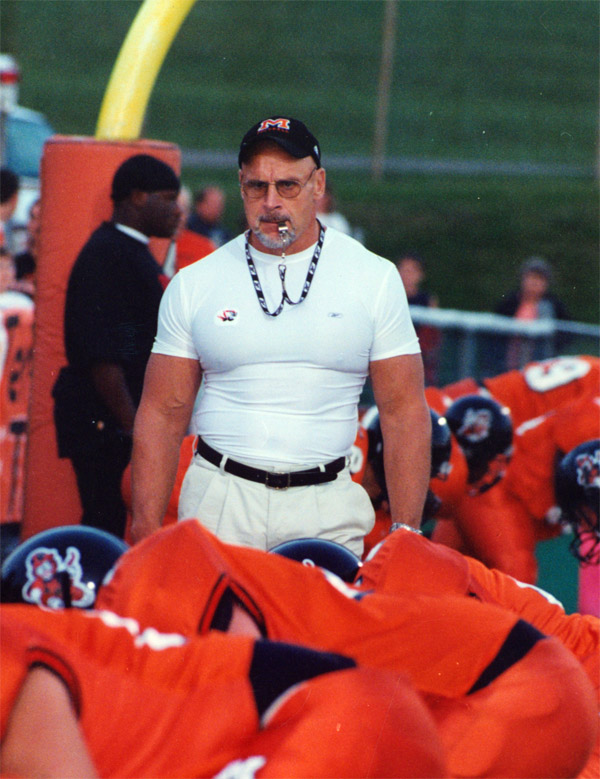 “He was a true Tiger,” said Jack Rose, who as head coach of the Tigers from 1992-97 worked with Studer. “If you ask someone what is a Massillon Tiger, their answer would be Studer. He loved training kids, helping make them stronger for football. He had a great rapport with the players.” – Dave Hutton, Masssillon Independent.
“He was a true Tiger,” said Jack Rose, who as head coach of the Tigers from 1992-97 worked with Studer. “If you ask someone what is a Massillon Tiger, their answer would be Studer. He loved training kids, helping make them stronger for football. He had a great rapport with the players.” – Dave Hutton, Masssillon Independent.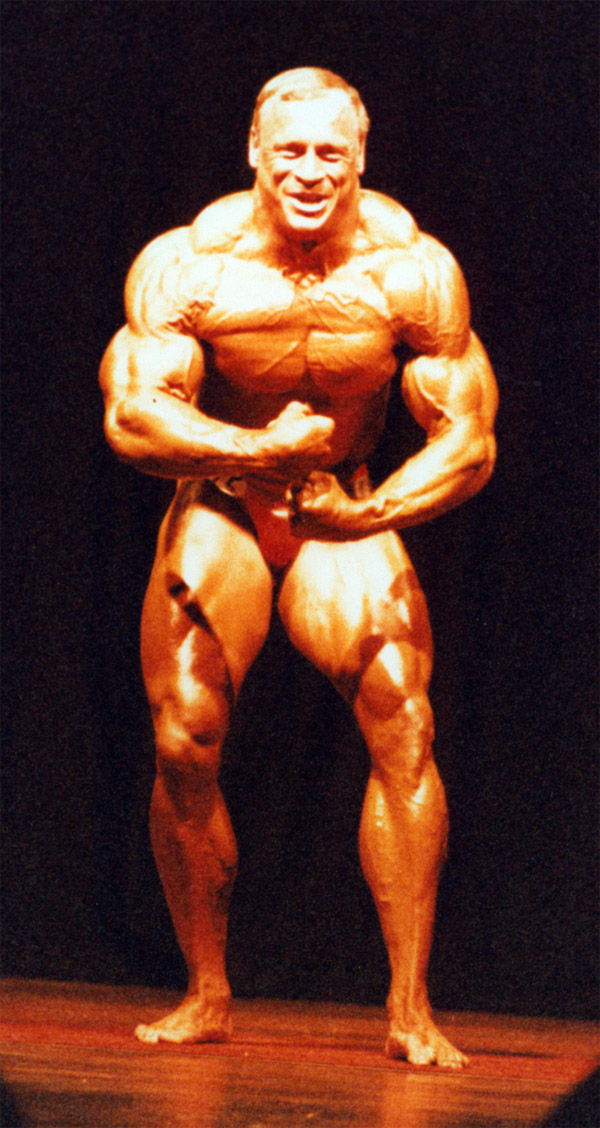 “Playing for him, and being around him, you were just afraid to fail for him,” said Craig McConnell, a former captain for Washington’s football team. “You were afraid to work in his weight room and not to exceed. You had that much respect for him. Everything was Massillon to him – this tow, this program, this school. He was what everyone in this city wanted to be.” – Elbert Starks III, Akron Beacon Journal.
“Playing for him, and being around him, you were just afraid to fail for him,” said Craig McConnell, a former captain for Washington’s football team. “You were afraid to work in his weight room and not to exceed. You had that much respect for him. Everything was Massillon to him – this tow, this program, this school. He was what everyone in this city wanted to be.” – Elbert Starks III, Akron Beacon Journal.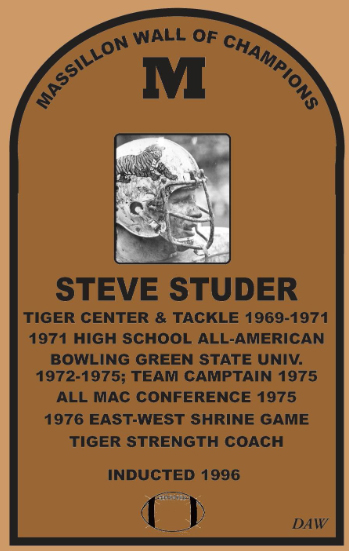

 Pflug was born in Massillon on October 4, 1905, and had the opportunity to play high school ball throughout his entire Tiger career under legendary Coach Dave Stewart.
Pflug was born in Massillon on October 4, 1905, and had the opportunity to play high school ball throughout his entire Tiger career under legendary Coach Dave Stewart.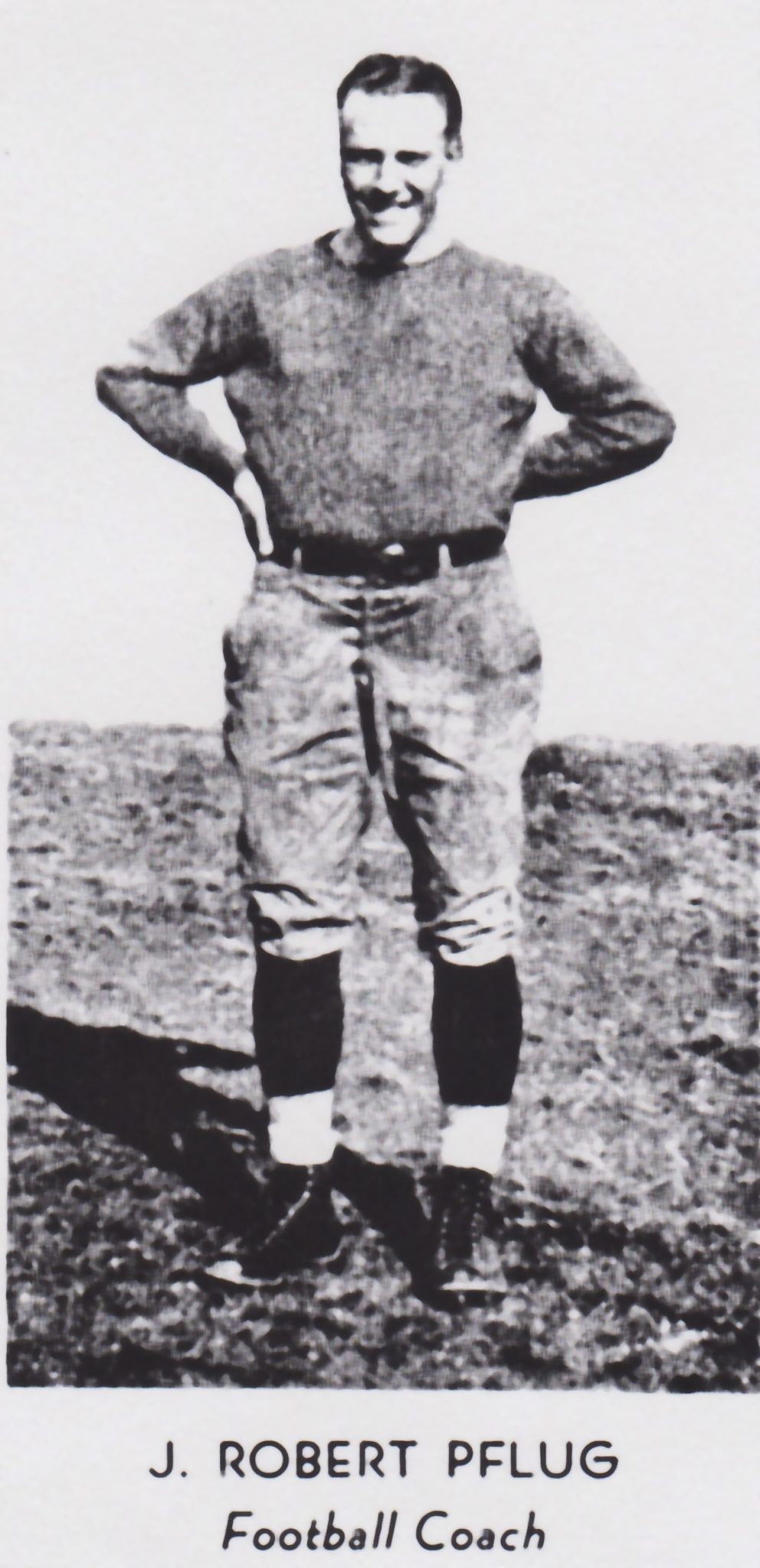 His first stop as a coach was at Knox High School in Pennsylvania from 1928-31, where he compiled a record of 20-10-1. After that came Bradford High School from 1932-50, which he left with a remarkable record of 126-29-5. Seven times his team was undefeated. He had a 31-game unbeaten streak (1933-36) and a 25-game unbeaten streak (1937-40) overlapping the great years of Massillon’s Paul Brown. But unfortunately, the two teams never met. He departed Pennsylvania as the winningest all-coach in the Big 30, which included teams in northern Pennsylvania and southern New York. In 1968, Bradford named their football stadium J. Robert Pflug Field.
His first stop as a coach was at Knox High School in Pennsylvania from 1928-31, where he compiled a record of 20-10-1. After that came Bradford High School from 1932-50, which he left with a remarkable record of 126-29-5. Seven times his team was undefeated. He had a 31-game unbeaten streak (1933-36) and a 25-game unbeaten streak (1937-40) overlapping the great years of Massillon’s Paul Brown. But unfortunately, the two teams never met. He departed Pennsylvania as the winningest all-coach in the Big 30, which included teams in northern Pennsylvania and southern New York. In 1968, Bradford named their football stadium J. Robert Pflug Field.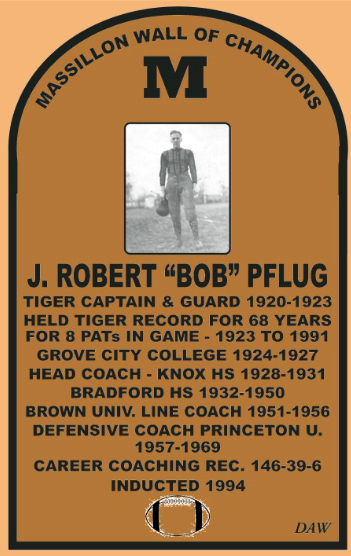

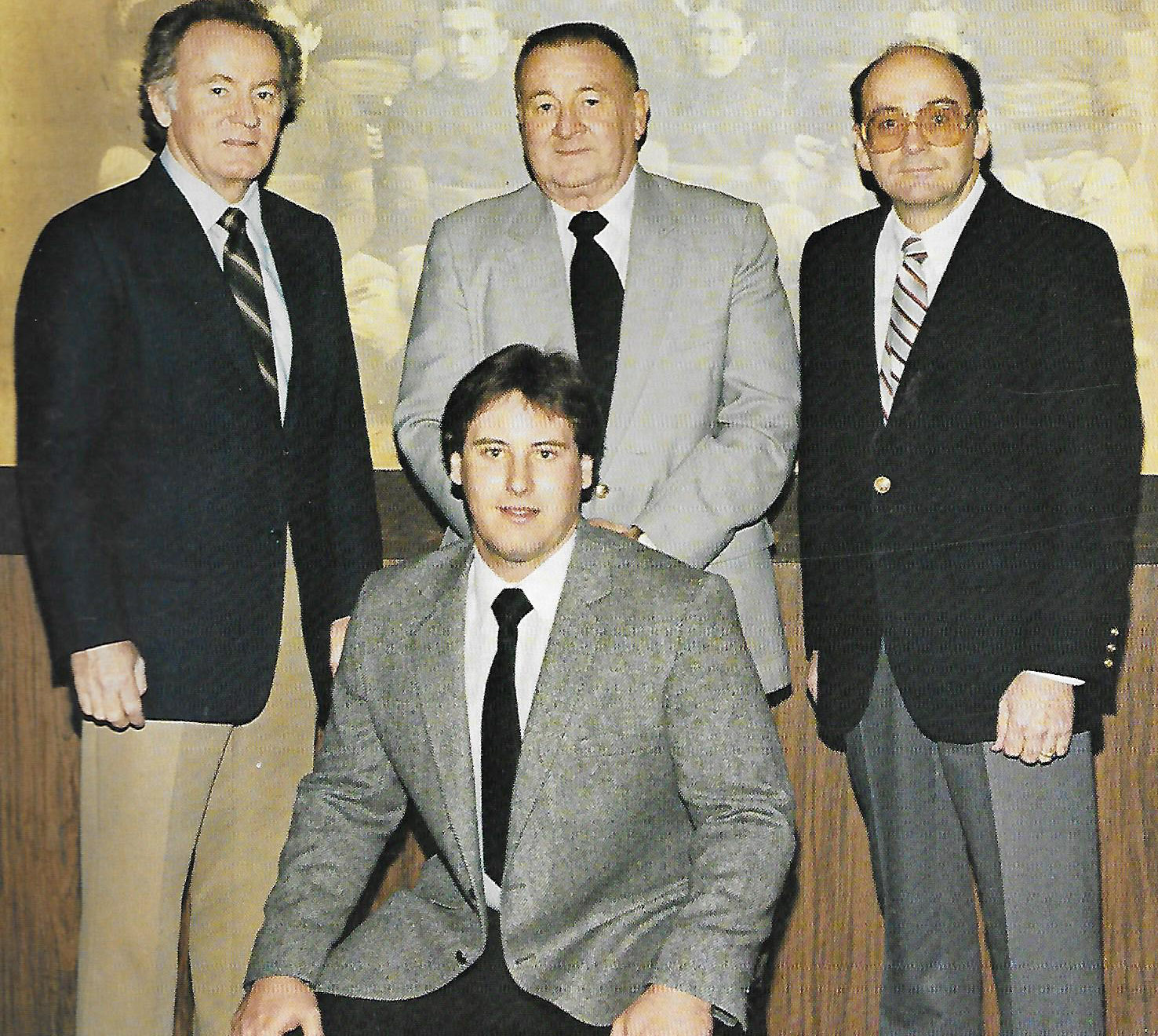
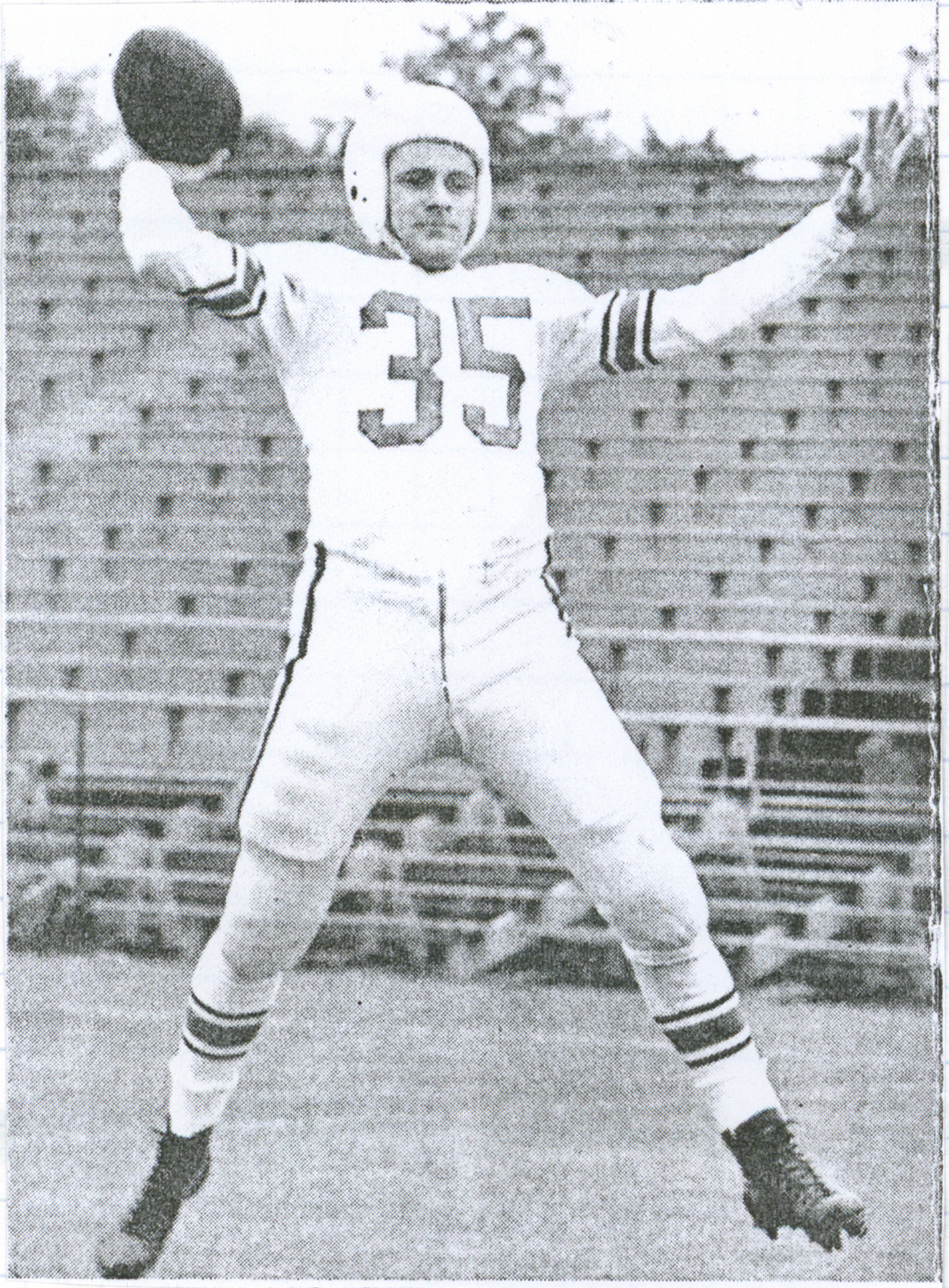 The McKinley game was special to James. “You know, the week of the game there’s not a helluva lot on anybody’s mind but the [Massillon-McKinley] game,” he said. “So much is brought up about the tradition and history and former games and former players – and there’s a little hatred mixed in there – competitive hatred. You don’t want to lose to these guys if you lose to anybody. I would compare McKinley Week to, as a coach out at Washington, getting ready to play USC or the Rose Bowl or the Orange Bowl – not just any Bowl – one of the big ones, here there’s so much on the line and so much visibility involved.” – Massillon Memories, Scott H. Shook, 1998.
The McKinley game was special to James. “You know, the week of the game there’s not a helluva lot on anybody’s mind but the [Massillon-McKinley] game,” he said. “So much is brought up about the tradition and history and former games and former players – and there’s a little hatred mixed in there – competitive hatred. You don’t want to lose to these guys if you lose to anybody. I would compare McKinley Week to, as a coach out at Washington, getting ready to play USC or the Rose Bowl or the Orange Bowl – not just any Bowl – one of the big ones, here there’s so much on the line and so much visibility involved.” – Massillon Memories, Scott H. Shook, 1998.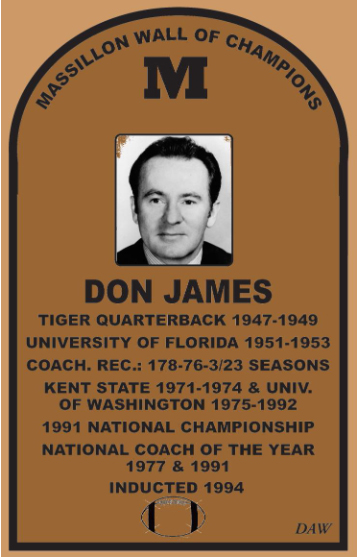
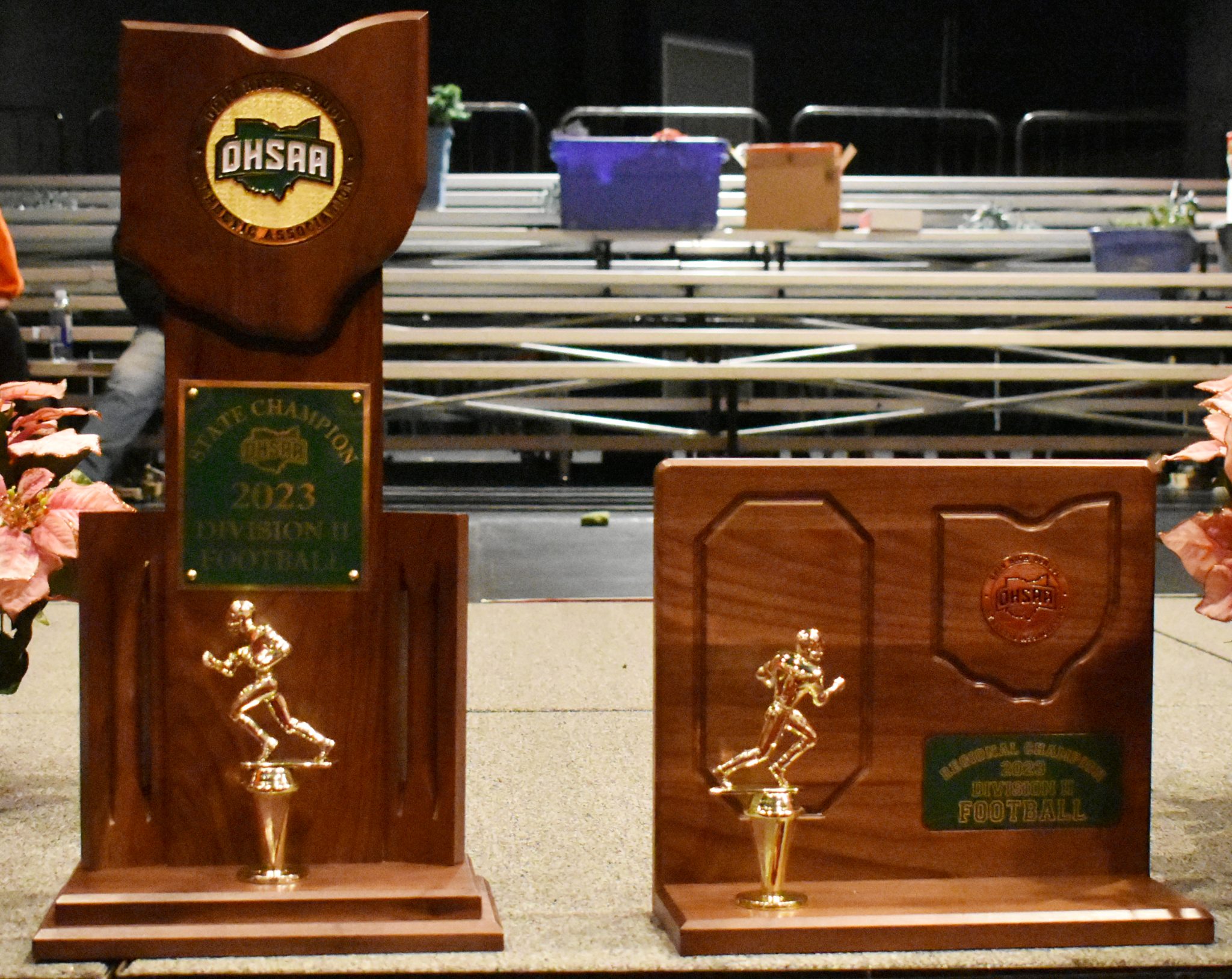 What a great season it was. Division II state champions. Perfect 16-0 season. Defeating the Division I state champion for the second consecutive year. Besting the team having the most wins in the country. The national rankings. And on and on. Here is a recap of a season to remember and one that all future teams will surely be measured against.
What a great season it was. Division II state champions. Perfect 16-0 season. Defeating the Division I state champion for the second consecutive year. Besting the team having the most wins in the country. The national rankings. And on and on. Here is a recap of a season to remember and one that all future teams will surely be measured against.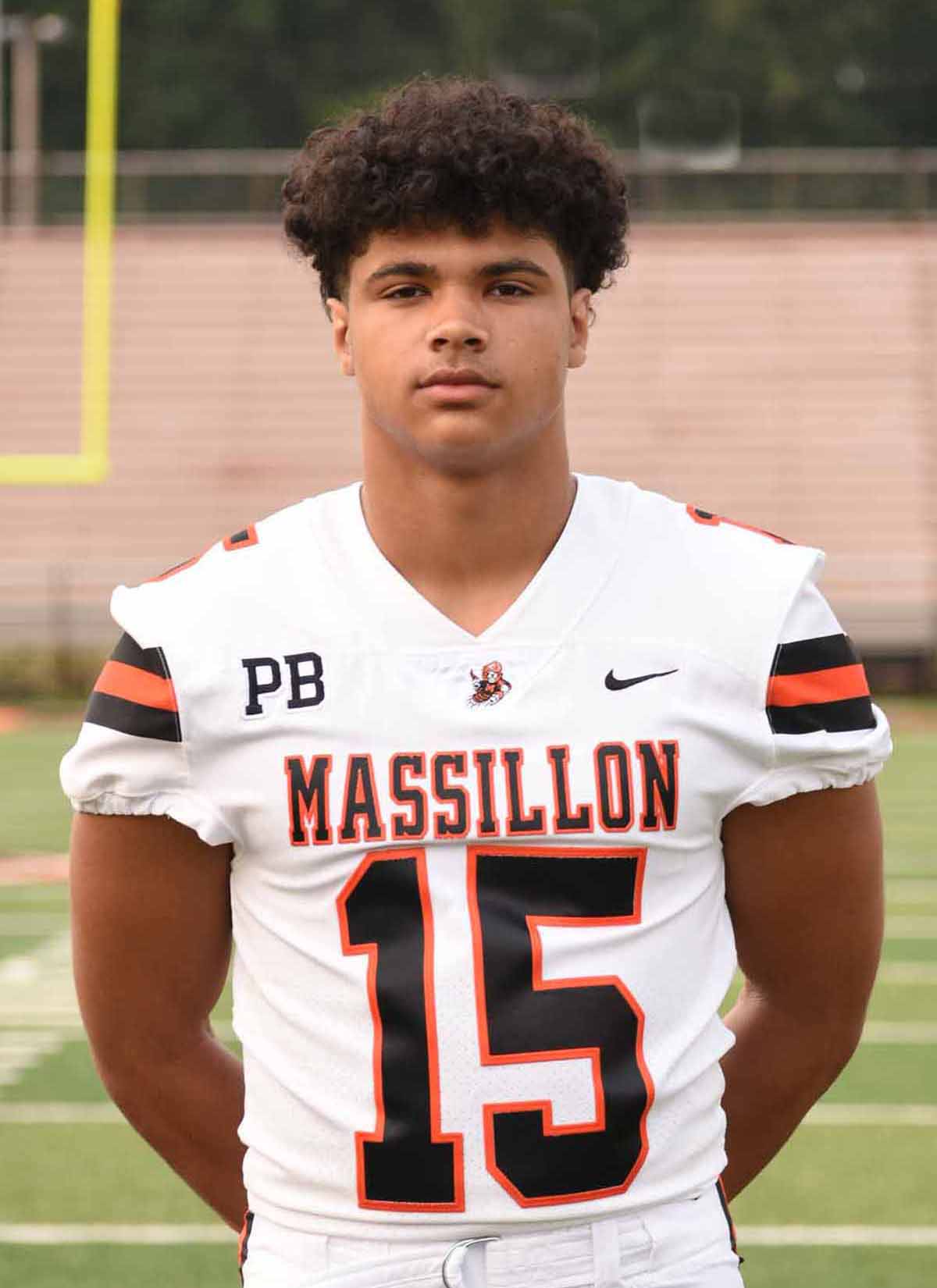
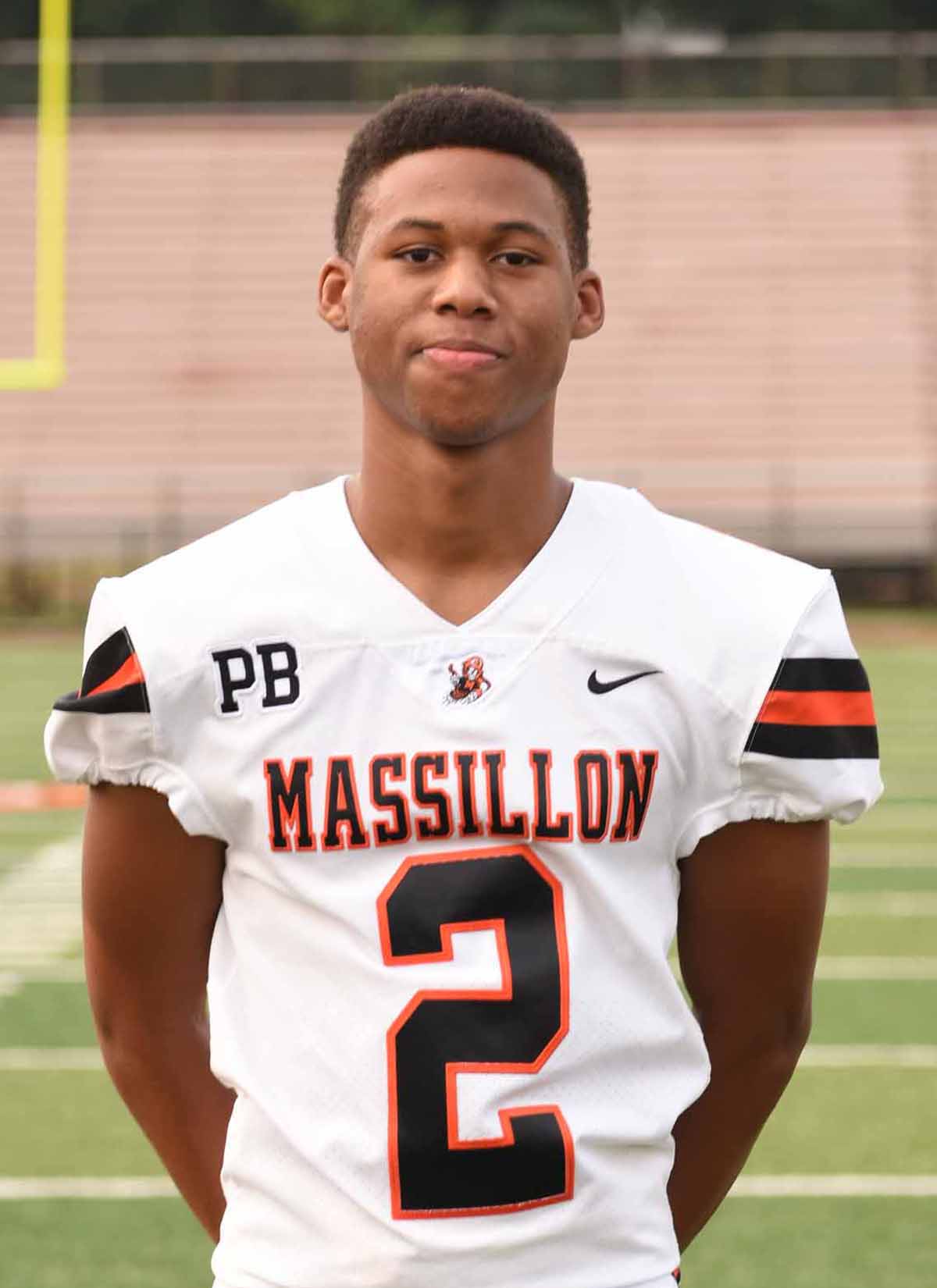
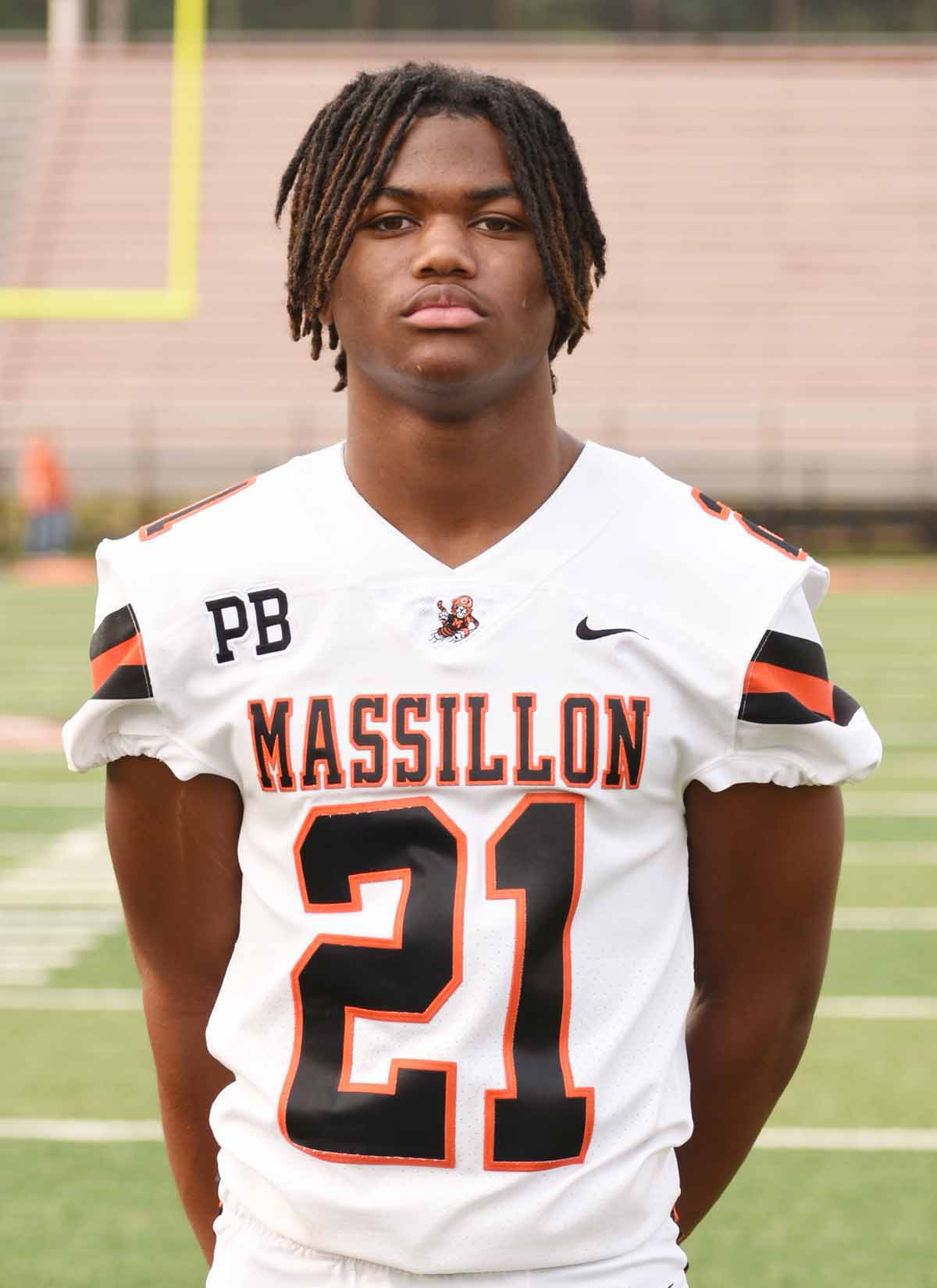
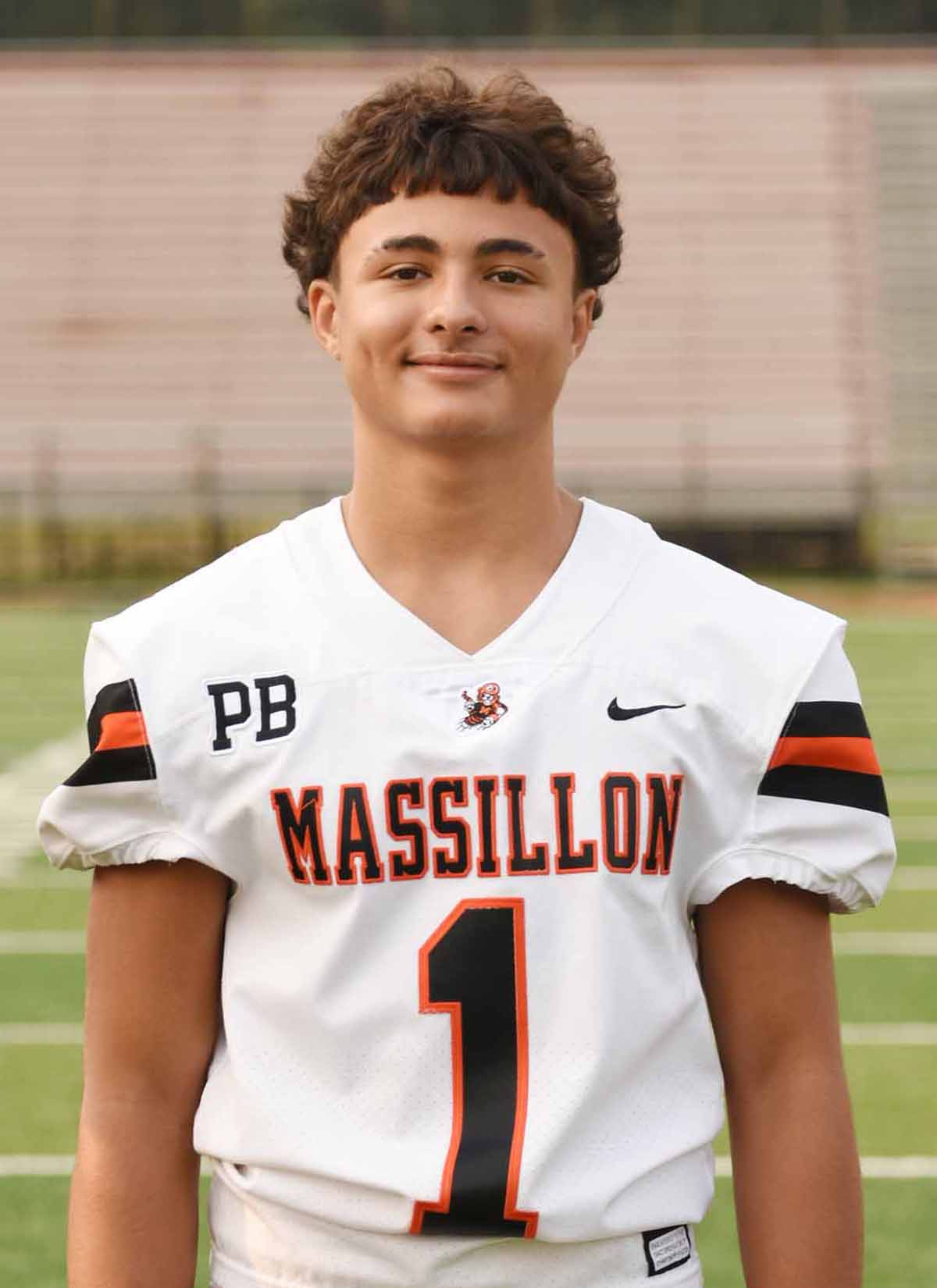
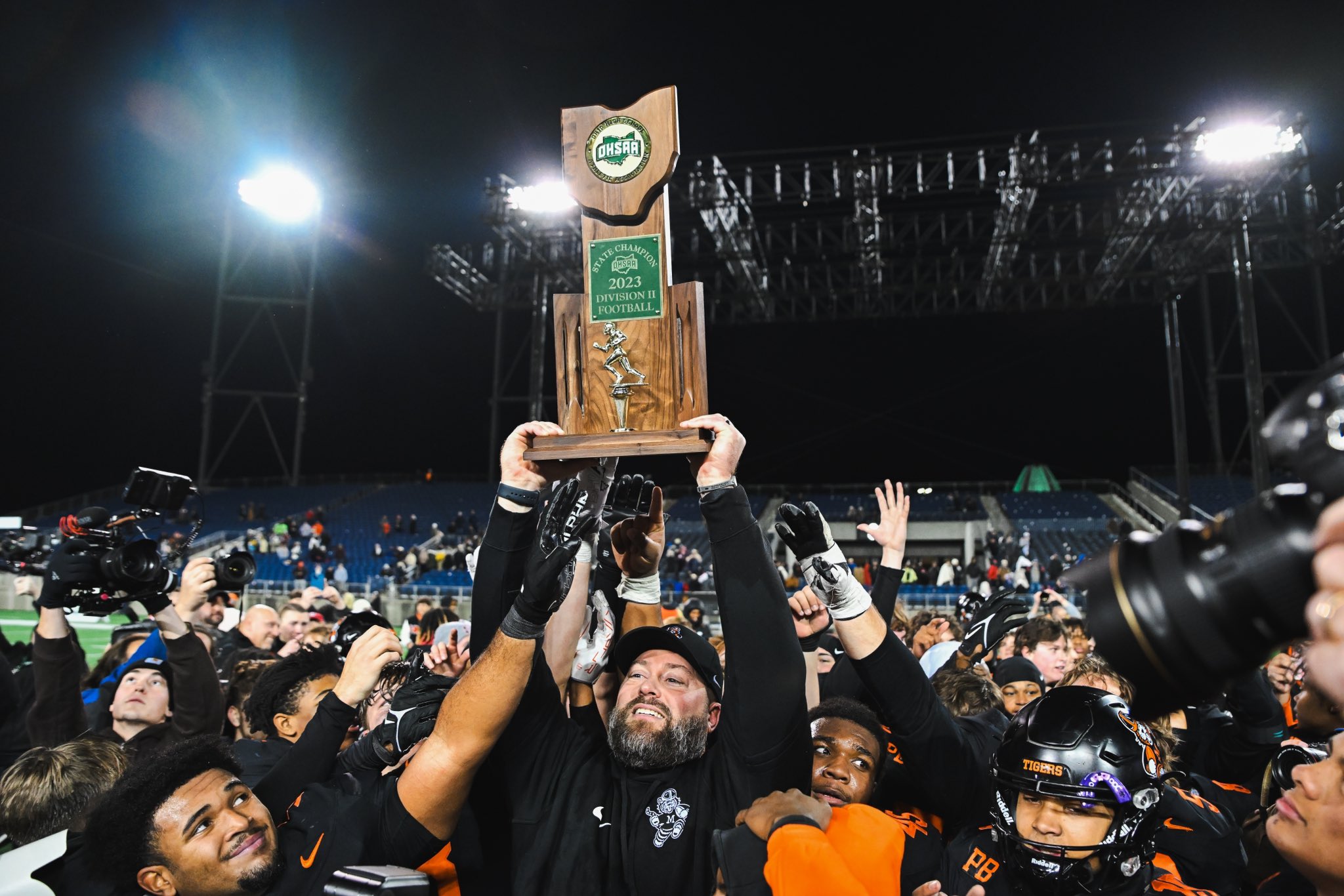 Akron Hoban game (state finals) – It was two great high school defenses battling it out in front of a near-capacity crowd (fifth largest in a Division II finals) at Tom Benson Stadium, with each team held below 200 yards of offense. Massillon tallied in the second quarter on a 6-yard run by Mylen Lenix, only to surrender a safety later in the period. The Knights, however, although stymied throughout most of the game, were in position to take the lead late in the fourth quarter, following a failed fake Tiger punt near midfield. An errant 3rd down snap led to a 4th and 8 at the 17, setting up a Hoban pass into the end zone for the win. But Pringle closed on the intended receiver and reached him just in time to break up the pass, securing both the game and the state title. Pringle had returned from injury for this game and led both teams with 14 tackles and 3.0 tackles-for-loss. The title was No. 25 for Massillon and the first in the playoff era. Following the game Tiger fans welcomed the team back to town with a rousing celebration. A parade with fireworks was held the following week as a formal salute. And commemorative merchandise went flying off the shelves.
Akron Hoban game (state finals) – It was two great high school defenses battling it out in front of a near-capacity crowd (fifth largest in a Division II finals) at Tom Benson Stadium, with each team held below 200 yards of offense. Massillon tallied in the second quarter on a 6-yard run by Mylen Lenix, only to surrender a safety later in the period. The Knights, however, although stymied throughout most of the game, were in position to take the lead late in the fourth quarter, following a failed fake Tiger punt near midfield. An errant 3rd down snap led to a 4th and 8 at the 17, setting up a Hoban pass into the end zone for the win. But Pringle closed on the intended receiver and reached him just in time to break up the pass, securing both the game and the state title. Pringle had returned from injury for this game and led both teams with 14 tackles and 3.0 tackles-for-loss. The title was No. 25 for Massillon and the first in the playoff era. Following the game Tiger fans welcomed the team back to town with a rousing celebration. A parade with fireworks was held the following week as a formal salute. And commemorative merchandise went flying off the shelves.
